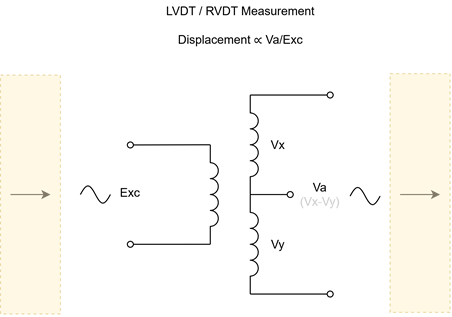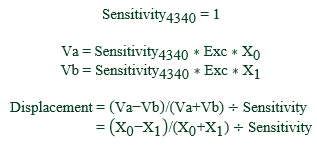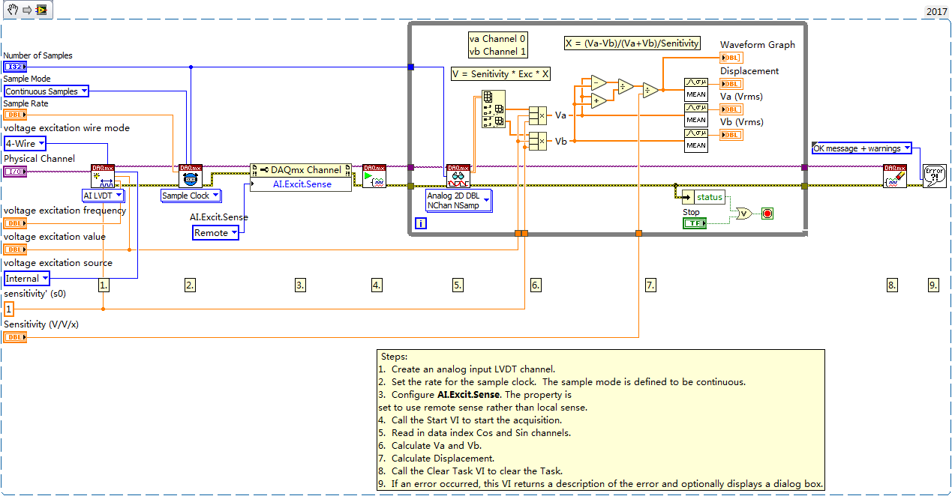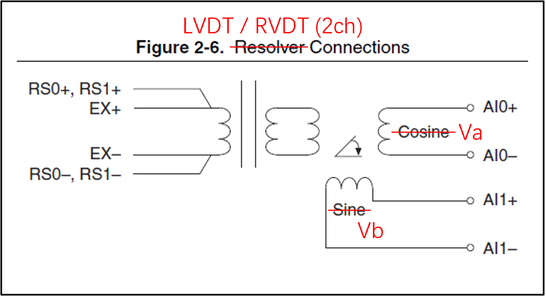Measuring Position with a 5-Wire or 6-Wire LVDT/RVDT and 2-Channel PXIe-4340
- Subscribe to RSS Feed
- Mark as New
- Mark as Read
- Bookmark
- Subscribe
- Printer Friendly Page
- Report to a Moderator
Products and Environment
This section reflects the products and operating system used to create the example.To download NI software, including the products shown below, visit ni.com/downloads.
- PXIe-4340
Hardware
- LabVIEW 2017
Software
- NI-DAQmx
Driver
Code and Documents
Attachment
Description
Description-Separate-1This example demonstrates how to take a position measurement from a 5-wire or 6-wire LVDT/RVDT using the 2 channels of PXIe-4340.
LVDT/RVDT (Linear/Rotational Variable Differential Transformer) is a common type of electromechanical transducer that can convert the linear or rotational motion of an object to which it is coupled mechanically into a corresponding electrical signal. There are two methods to measure and calculate the displacement, Va/Exc or (Va-Vb)/(Va+Vb).
| Principal | Connection Type | Need Analog Input Channels |
| Va/Exc | 4-Wire | 1 Channel |
| (Va-Vb)/(Va+Vb) | 5-Wire / 6-Wire | 2 Channels |

A single channel of PXIe-4340 is using Va/Exc method to measure LVDT/RVDT. The reading X is the displacement of the sensor. We can use 2 channels of PXIe-4340 to take a position measurement from a 5-wire or 6-wire LVDT/RVDT using the (Va-Vb)/(Va+Vb) method. The principal is as followed.
In order to use 2 channels, the NI PXIe-4340 needs to use a channel per secondary winding. Excitation to the primary winding is sourced from one of the channel excitation terminals. Leave the excitation terminals of the other channel unconnected. In order to get an accurate measurement, both channels will need to be set to use remote-sense and connected to the primary winding. A connection diagram is provided below.
Description-Separate-2
How to Use
How-Separate-1In order to run this example:
- Open VI and select the appropriate Channel and Channel Settings.
- Run the VI to perform acquisition.
- Press the Stop button to end the acquisition.
Additional Information
Additional-Separate-1- Measuring Angular Position with a Resolver and the PXIe-4340
- NI PXIe-4340 User Manual
- NI-DAQmx and LabVIEW Compatibility
Example code from the Example Code Exchange in the NI Community is licensed with the MIT license.




